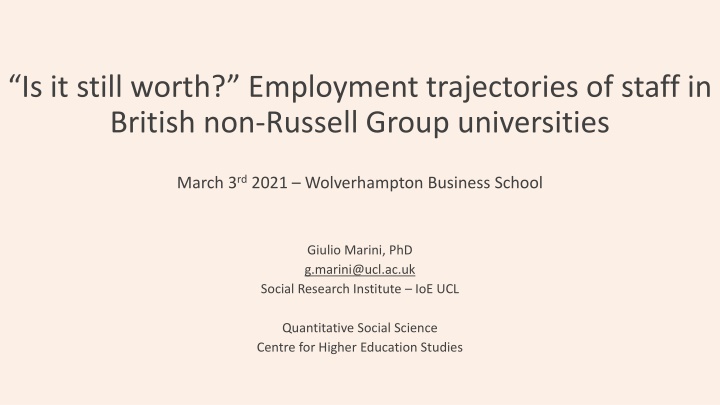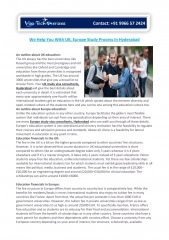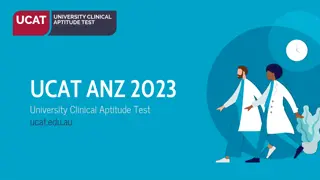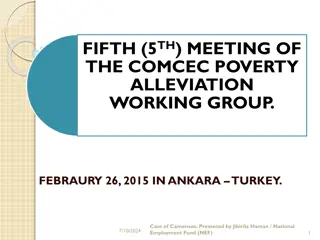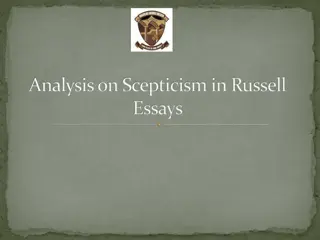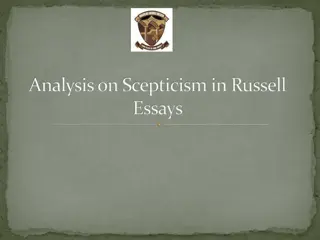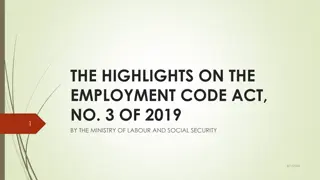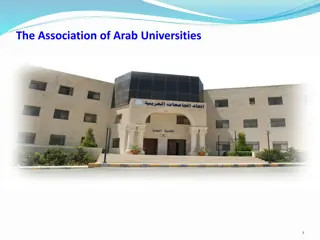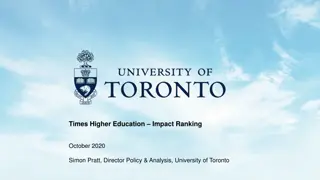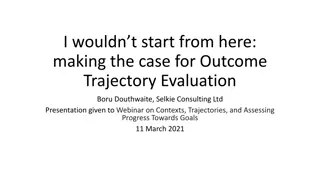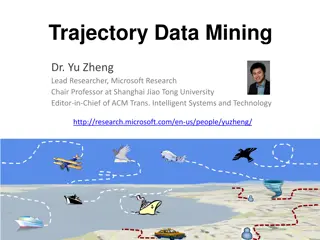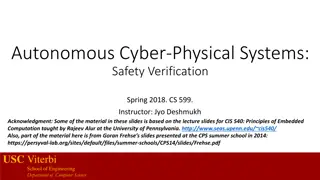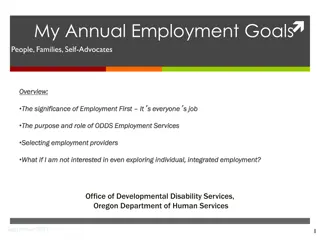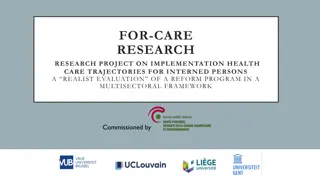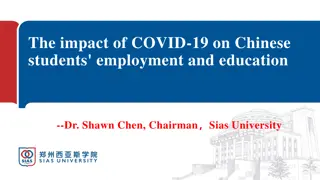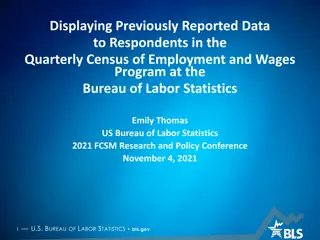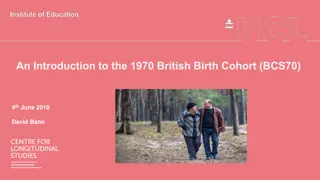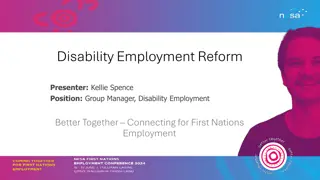Employment Trajectories at Non-Russell Group Universities: Insights and Trends
This research study explores the emerging issues and empirical findings related to the employment trajectories of staff in non-Russell Group universities. The study delves into the challenges and alternatives faced by staff members in higher education institutions, shedding light on issues such as career tracks, institutional embeddedness, and stressful working environments. Through in-depth interviews and questionnaire responses, the research provides valuable insights into the workforce dynamics and predictions regarding staff retention in the higher education sector.
Uploaded on Feb 21, 2025 | 3 Views
Download Presentation

Please find below an Image/Link to download the presentation.
The content on the website is provided AS IS for your information and personal use only. It may not be sold, licensed, or shared on other websites without obtaining consent from the author.If you encounter any issues during the download, it is possible that the publisher has removed the file from their server.
You are allowed to download the files provided on this website for personal or commercial use, subject to the condition that they are used lawfully. All files are the property of their respective owners.
The content on the website is provided AS IS for your information and personal use only. It may not be sold, licensed, or shared on other websites without obtaining consent from the author.
E N D
Presentation Transcript
Is it still worth? Employment trajectories of staff in British non-Russell Group universities March 3rd2021 Wolverhampton Business School Giulio Marini, PhD g.marini@ucl.ac.uk Social Research Institute IoE UCL Quantitative Social Science Centre for Higher Education Studies
You said if I came in late for another shift, you'd fire me I'll fire you tomorrow Bringing Out the Dead Martin Scorsese (1999)
Content of presentation Source of data: CGHE3.2 project (2016-2020) Qual & quant Emerging issues about staff in non Russell Group universities Pros and cons Some empirical findings Prediction to leave higher education sector (3 tables) Conclusions
Data Marini, Locke, Whitchurch (2021) The future workforce in locally and globally engaged higher education institutions. Colchester, Essex: UK Data Service. 10.5255/UKDA-SN-854 111 in depth interviews (in two stages) Some 600 valid answers to a questionnaire
Emerging issues Staff is heterogenous by: Career track; Expectations; Institutional issues; Disciplinary profession; Institutional embeddedness; Agency is highly activated, sometimes retrospectively justifying trajectories Working in these institutions is stressful Alternatives are as real as limited
Origin / Destination matrix ORIGIN Research- only Teaching & Research Teaching- only Academic, non-T nor R Total DESTINATION T&R T R NOR MM/SM EXTERNAL PRIVATE PUBLIC CHARITABLE TOTAL 69.96 3.02 6.87 9.89 14.29 15.38 10.99 6.87 3.30 140.57 24.00 45.33 0.00 26.67 17.33 25.33 21.33 6.87 9.33 176.19 22.22 1.59 58.73 9.52 25.40 25.40 17.46 12.70 11.11 184.13 6.67 0.00 0.00 30.00 16.67 20.00 10.00 16.67 13.33 113.34 44.53 7.19 9.69 11.09 16.17 18.23 13.16 8.08 5.64 133.78
Comparison of averages by intention to leave higher education industry INTENTION TO EXIT HE No 0.77273 10.2 0.47882 42.9 0.36868 113.3% 0.70805 0.12874 0.25441 0.35309 46.4 0.28608 T TEST (p) Yes EXPERIENCE IN NONHE (1 YES) EXPERIENCE IN HE (YEARS) EDUCATION: PHD (1 YES) WORKHOURS (WEEKLY) EXTRAFUNCTION (1 YES) OVERTIME FUNCTION = TEACH&RESEARCH FUNCTION = TEACHING KR_DEAN SEX (1 MALE) AGE STUDYNIG (1 YES) 0.83505 0.0873 0.2839 0.0370 0.0281 0.0870 0.0218 0.0061 0.0430 0.0058 0.0113 0.0267 0.0846 9.9 0.57732 41.1 0.44330 118.2% 0.57732 0.19588 0.13402 0.47917 44.2 0.21650
Prediction of intention to leave higher education industry (logistic regression) Q25_ext Coef. Std. Err. z P>|z| [95% Conf. Interval] Experience in oth educ level Experience in HE (years) Education: PhD (1 Yes) workhours (weekly) Extrafunction (1 Yes) Overtime function_AC function_T KR_Dean Sex (1 Male) Age Studying (1 Yes) _cons -1.23424 0.035867 -1.05367 -0.01774 0.626959 1.810501 -0.68559 -0.22625 -1.06352 1.015741 -0.04788 -0.84279 0.265241 0.473713 0.033945 0.33198 0.017634 0.266879 0.680107 0.345023 0.44624 0.377422 0.275981 0.01913 0.365301 1.187821 -2.61 1.06 -3.17 -1.01 2.35 2.66 -1.99 -0.51 -2.82 3.68 -2.5 -2.31 0.22 0.009 0.291 0.002 0.314 0.019 0.008 0.047 0.612 0.005 0.000 0.012 0.021 0.823 -2.1627 -0.03066 -1.70434 -0.0523 0.103885 0.477516 -1.36182 -1.10087 -1.80325 0.474828 -0.08537 -1.55877 -2.06285 -0.30578 0.102397 -0.403 0.016822 1.150032 3.143486 -0.00936 0.648364 -0.32379 1.556653 -0.01038 -0.12682 2.593328
Conclusions Intentions are not real behaviours The academic profession is now diluted and fragmented Hard to state it not anymore always coveted Staff tentatively weight pros and cons Non-Russell Group British universities are not paradises nor the worst possible
